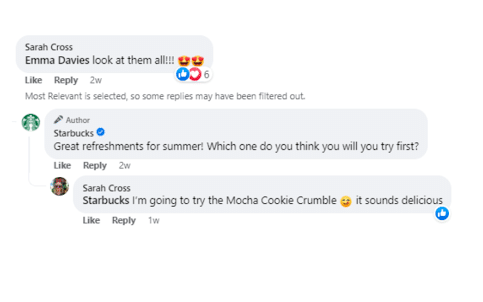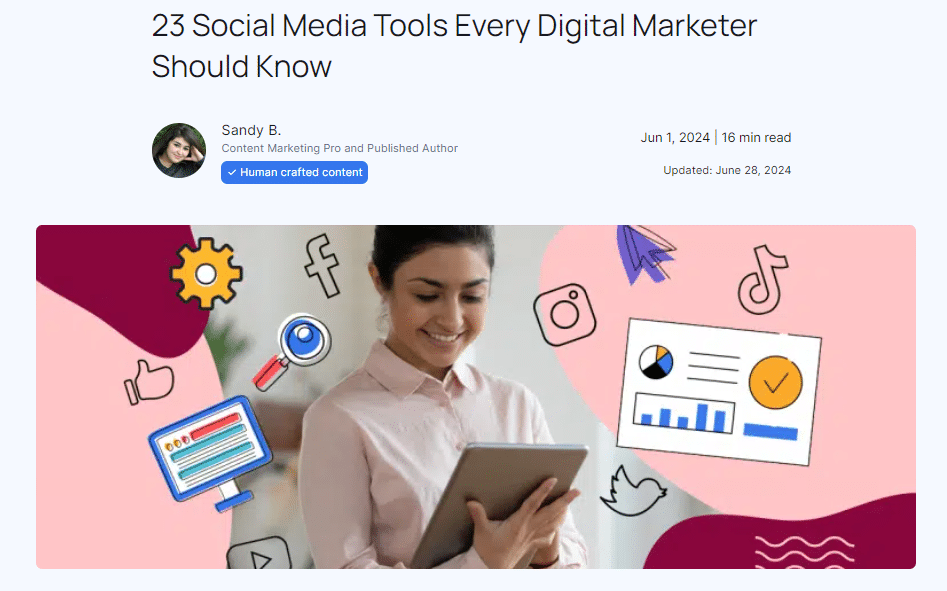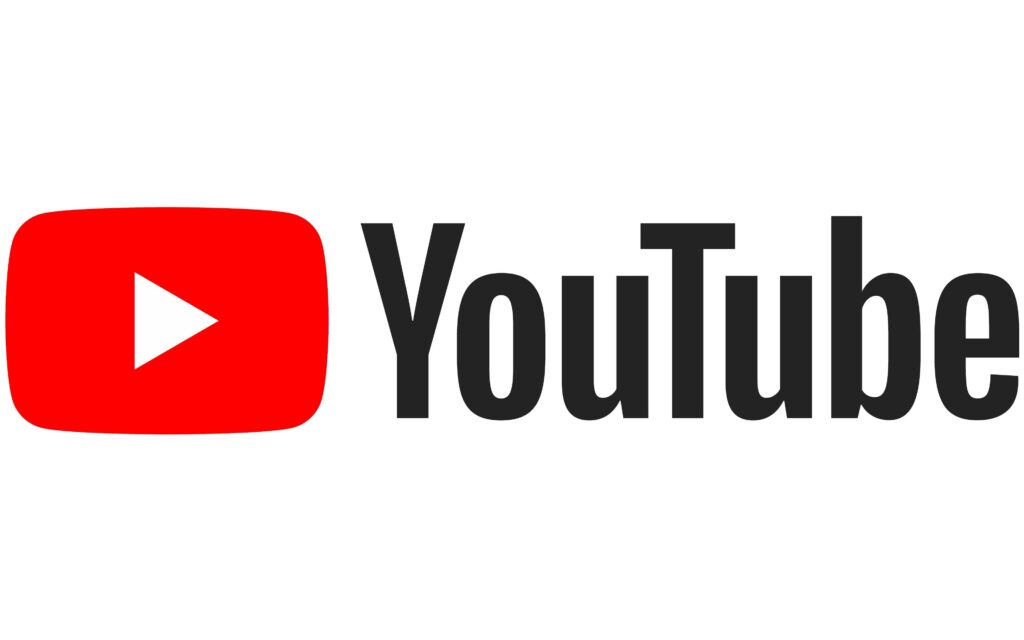Social media marketing is no longer an optional channel for businesses, it’s an essential part of a well-rounded digital marketing strategy and growth plan.
However, with so many platforms, ad types, techniques, and post formats, it can seem like an overwhelming endeavor.
Thankfully, there are many tips you can use to help direct your social media marketing approach and create a strategy that works for your business needs.
This blog will help you learn the best social media marketing tips for small business owners and marketing teams who are looking for some direction in their strategies.
- Why Does Social Media Marketing Matter?
- 17 Social Media Marketing Tips for Small Business Teams
- Marketing Tips for Popular Social Media
- Wrap Up
Why Does Social Media Marketing Matter?
Social media marketing is an incredibly effective strategy for small businesses.
It allows you to focus on local and individual customers, creating direct messages and communication with the people most important to the success of your business.
Social media channels and platforms are powerful tools for connecting and communicating with audiences, gathering new leads, and building brand awareness while increasing brand loyalty.
Without a strong social media strategy, it will be hard for your small business to become a recognized name in your area or industry.
By taking time with your social media approach and investing in your social strategy, you can achieve important benefits for your small business.
17 Social Media Marketing Tips for Small Business Teams
Let’s take a look at some of the best social media marketing tips for small businesses. This is a valuable resource for marketing teams and owners looking to get ahead in the social media game.
1. Identify your social audience
Understanding your audience is crucial for effective social media marketing. It involves researching and defining the demographics, interests, and behaviors of your target audience.
By knowing who you’re targeting, you can tailor your content, messaging, and advertising to resonate with them specifically.
This leads to higher engagement, better conversion rates, and ultimately, more success on social media platforms.
By identifying your social audience, you can tailor your social approach to the people who matter most.
2. Interact and build relationships with followers
Social media revolves around interacting with people on a personal level. When you engage with people, you build relationships, encouraging interest and brand loyalty. In fact, 60% of customers report finding new products and services through social media.
Chipotle offers an excellent example of the potential in these relationships. This food chain creates dances, hosts contests, and encourages user-generated content. Their strategy has paid off with notable brand humanization and a large social media following.
Starbucks interacts with customers as if they were close friends:

Following this path, you can see Wendy’s tapping into humor. From polling users about whether they should become the head of Twitter to regularly using levity to comment on trends or complaints, they have seen tremendous growth on social media, which has translated into revenue.
Nike has also built a strong reputation for customer relationships by tapping into the brand’s human interest side. With posts about athletes using their products, the company invites user engagement, establishing connections and social media success.
Provide high-quality content that aligns with your audience’s interests regularly. Encourage direct interaction by asking questions, commenting on other posts, and sharing followers’ posts. If people leave comments or send messages, respond as quickly as possible so they know you appreciate the engagement. This all lays a foundation for positive relationships and a sense of community with your business.
3. Target the right channels
Not every social media platform will be effective for your small business. Different platforms attract different demographics and user behaviors.
Understanding your target audience’s preferences and habits will help you select the most appropriate channels for your social media marketing efforts.
For example, if your audience consists mainly of young adults, platforms like Instagram or TikTok might be more suitable than LinkedIn.
By focusing your efforts on the channels where your audience is most active, you can maximize your reach and engagement.
4. Search for new sales and marketing opportunities
Social media platforms offer more than just opportunities for engagement; they can also be powerful sales and marketing tools.
Social selling, for instance, enables you to directly integrate your eCommerce store with your social media profiles, allowing customers to make purchases without leaving the platform.
Additionally, platforms often introduce new advertising features and promotional opportunities.
Keeping abreast of these developments and exploring how they align with your business goals can open up new avenues for driving sales and expanding your marketing reach.
5. Create a social content calendar
Consistently creating engaging content for multiple social media platforms can be challenging and time-consuming. A social content calendar helps alleviate this burden by allowing you to plan and organize your content in advance.
By mapping out your posts ahead of time, you can ensure a steady stream of content that aligns with your overall marketing strategy and goals.
Furthermore, scheduling tools enable you to automate the posting process, freeing up time and resources for other aspects of your business.
With a content calendar in place, you can maintain a consistent presence on social media while minimizing stress and maximizing efficiency.
6. Use the right tools
Utilizing various supporting tools is essential for optimizing your social media efforts.
These tools assist in gathering metrics, monitoring post performance, scheduling content, creating engaging visuals, understanding your audience demographics, and driving conversions.
However, with a plethora of options available, it’s crucial to focus on tools that align with your specific business objectives and requirements.

7. Find the best hashtags for your posts
Hashtags play a pivotal role in enhancing the discoverability and reach of your social media posts. They serve as labels that categorize content, making it easier for users to find related posts and engage with your brand.
To maximize the effectiveness of hashtags, conduct thorough research to identify the most relevant and popular ones within your industry, niche, and local area.
By incorporating strategic hashtags into your posts, you can effectively connect with your target audience and amplify the visibility of your content.
8. Cross-post between platforms
Cross-posting entails sharing the same content across multiple social media platforms.
This approach allows you to reach diverse audiences across different channels, thereby maximizing your brand’s exposure and engagement potential.
Moreover, cross-posting can streamline your content creation process, as you can repurpose and recycle high-performing content across various platforms.
By adopting a cross-posting strategy, you can efficiently leverage the strengths of each platform while maintaining a consistent brand presence across the digital landscape.
9. Create great social designs
Visual content plays a pivotal role in capturing audience attention and driving engagement on social media platforms.
Incorporating visually appealing images, graphics, and videos into your posts can significantly enhance their effectiveness and appeal.
Investing time and effort in creating compelling social designs is essential for standing out in crowded social feeds and conveying your brand’s message effectively.
Platforms like Canva offer user-friendly tools and templates that empower businesses to design captivating visuals even without extensive design expertise.
10. Track and improve your performance
Social media is just like every other aspect of digital marketing, so data collection and analysis are essential to moving in the right direction.
Tracking your performance allows you to see what types of posts are working best and engaging your audience.
This gives you the chance to improve and let go of what isn’t working for your brand.
11. Join in on trends
Social media platforms are often abuzz with various trends, including challenges, memes, and jokes.
Participating in these trends (if it makes sense for your business) can significantly boost engagement with your audience. Stay vigilant and ready to adapt to emerging trends, even if they’re unplanned.
This helps keep your brand relevant and delights your audience.

12. Explore different formats
Vary your content formats to maintain audience interest and engagement.
Switch between videos, open-ended questions, polls, or infographics to add variety to your social media presence.
This approach fosters creativity within your team and keeps your content fresh and engaging.
13. Work on quality over quantity
While posting consistently is important, prioritize quality over quantity in your social media content.
Focus on creating valuable posts that align with your business goals and brand identity.
Quality content resonates more with your audience and drives better results than merely meeting a post quota.
14. Optimize your profiles
Ensure your social media profiles accurately reflect your brand identity and provide essential information.
Include details about your business, location, products or services, and reasons why users should follow you.
Additionally, include links to your website or eCommerce store for easy access by potential customers.
15. Integrate Social Media With the Rest of Your Strategy
Social media should not be a side act operating in its own sphere—integrate it with everything else your business does to engage with customers.
Use live feed videos to give people a backstage look at trade shows or events you host. Create contests that award people with coupons for your online store.
Note your social media marketing person’s conversations with potential customers, and integrate that with your sales team. Social media should work alongside all your other efforts as a business.
16. Ensure Your Profiles Are Instantly Recognizable
Your brand should pop out to anyone who comes across your social profiles. If they follow you on one platform, they should be able to recognize you on another immediately.
To achieve this goal, think about the colors you use for your digital presence, the language, and styles you incorporate, and the types of images you use.
Pay close attention to your business profile and the pictures you choose for your profile shots.
17. Encourage User-Generated Content
When consumers are seen using your products or services, it quickly boosts your reputation. Consider all the user-generated videos posted for GoPro cameras and how that footage has created mass appeal for the business.
People post their videos to show all the amazing places the camera can go, which produces highly effective advertising.
It taps into people’s desire to be part of the group while also showing the products’ capabilities.
Marketing Tips for Popular Social Media
Let’s look at a few specific social platforms and how you can maximize your presence in these areas.
YouTube tips for small businesses

Some people will say YouTube is a video platform, not social media, but if it builds communities and encourages interaction, it forms a social environment. Users can create full-length or quick videos (known as Shorts) to share with their followers.
Here are five things business owners on YouTube can do to boost engagement on the platform:
- Improve descriptions. Algorithms can’t watch videos. Descriptions tell YouTube what your video is about so it appears in the best searches and encourages people to watch.
- Think carefully about titles. The right title will catch the eyes of potential viewers. Make it interesting and engaging so your audience wants to click.
- Cross-promote videos. You can embed videos on your website, post on other social media pages, and tell people about your creations.
- Pick a great thumbnail. You can select what image appears as the thumbnail for your video. Like the title, it will be one of the first things potential viewers see. Select an image that catches their eye and makes your video engaging.
- Monitor stats and watch times. YouTube provides great stats about who watches your videos and how long they watch. Track this information for patterns in what is popular and what isn’t. Identify what encourages people to watch to the end.
Facebook tips for small businesses

Facebook helped birth our current social media landscape, making it a cornerstone of most social media strategies. It remains, along with YouTube, one of the top platforms in the country. Here are five tips for using it better:
- Know your demographics. Facebook provides a wealth of information about who follows your page and what they do. Track this so you know who your brand appeals to online and how they interact with your posts.
- Track data about posting times. You may find your audience is more active in the morning, over lunch hours, or in the evening. Look at how many interactions your posts get at different posting times and who interacts when. This will help you maximize your posting schedule.
- Use great pictures. Posting pictures captures people’s attention. Select a great photo so your post ‘pops’ on their feeds.
- Customize profile pictures. Profile pictures and banners capture attention when visitors come across your page, so make them count.
- Experiment with video. Facebook offers great video posting options, including live streams. Videos are popular with many audiences, so seize these opportunities.
Instagram tips for small businesses

Instagram was one of the premiere picture-focused social platforms and remains immensely popular. Here’s how to make the most of it for your business:
- Create a profile that stands out. You only get 150 characters, so think carefully about what to say. Explain what makes your business awesome and set the tone for your brand.
- Think about branding colors. Instagram is heavily focused on visuals, so consider how your images will appear. Before you start posting, consider your brand colors and how you want your pages to appear.
- Use features like hashtags. Hashtags can help you loop in with existing conversations and customer interests. Know what people appreciate, and tag your posts appropriately.
- Think about post captions. Captions help engage your audience. Think about questions you can post, backstory you can offer, or witty observations you can make.
- Consider going behind the scenes with content. People love the personal nature of social media, and Instagram is a great way to make it happen. Let followers meet business leaders, see you planning significant events, and engage with you individually.
TikTok tips for small businesses

TikTok is a leading social media site for popular dances and short videos people post and share. As it grows, it also becomes more inviting for businesses; here are some options to make TikTok work for your business:
- Study trends on TikTok. TikTok is famous for its passing trends and fads. Monitor these shifts in user engagement and jump on the bandwagons that apply to you.
- Get creative with editing tools. TikTok offers excellent opportunities to take videos to the next level. Get editing and see what you can do to dress up your videos.
- Make your topic and information clear to the algorithm. Using the right hashtags and a good description helps the algorithm know when to show your content.
- Actively engage with the community. You have many ways to interact personally with people, including hashtags, responding to posts and comments, and liking others’ content.
- Consider TikTok influencers. Influencers are a hot strategy with TikTok, as people with huge followings can get your brand out in front of competitors.
LinkedIn tips for small businesses

LinkedIn is the optimal professional network. This site takes on a professional atmosphere, making it slightly different from many other platforms. This shift impacts how businesses use LinkedIn and the types of posts they make. Consider these tips:
- Use the platform to establish yourself as an expert in the field. Post regularly to highlight your knowledge and connect with other professionals.
- Encourage employees to make posts as well. Your employees represent your business. Encourage them to post on LinkedIn in a professional capacity as employees of your business to highlight the passionate talent in your organization.
- Create and optimize your business page. Use interesting headlines, tell people what makes your business amazing, and fill in as much information as possible.
- Post a few different types of content. LinkedIn posts should be professional, but they don’t all have to be the same. Make thought-leadership pieces, marketing posts, and posts about your company.
- Incorporate CTAs in your posts. Invite engagement by providing specific calls to action. For example, you might invite people to like your post, visit your company page, or try a free demo.
You may also be interested in these articles:
- How to Simplify Your Social Media Audit Process? Find out Here
- Social Media Challenges and how to use them as opportunities
- What is a social media influencer and how they can help your brand
Wrap Up
Social media marketing tips for small businesses are invaluable for navigating the digital landscape effectively.
By implementing these strategies, you can elevate your brand’s online presence and engage with your target audience more meaningfully.
Remember, success in social media marketing requires a cohesive approach that integrates various elements seamlessly.
With WriterAccess, you can enhance your strategy by accessing top-tier writers who specialize in crafting compelling content tailored to your unique needs.
Start your 14-day free trial today and experience the transformative power of expertly crafted content in driving your business forward in the digital realm.
[ion_script src=”https://ionfiles.scribblecdn.net/scripts/ionizer-1.4.2.min.js” hash=”eyJ1cmwiOiIvL2ludGVyYWN0aXZlLnJvY2tjb250ZW50LmNvbS90aGViZWF0LWJhbm5lcj9faW9uX3RhcmdldD1lbWJlZC0xLjAiLCJpZCI6Il9pb25faW9uaXplcl8xNzA2NzE5NDQ4MTI4IiwiZnVsbFNjcmVlbiI6ZmFsc2V9″]







